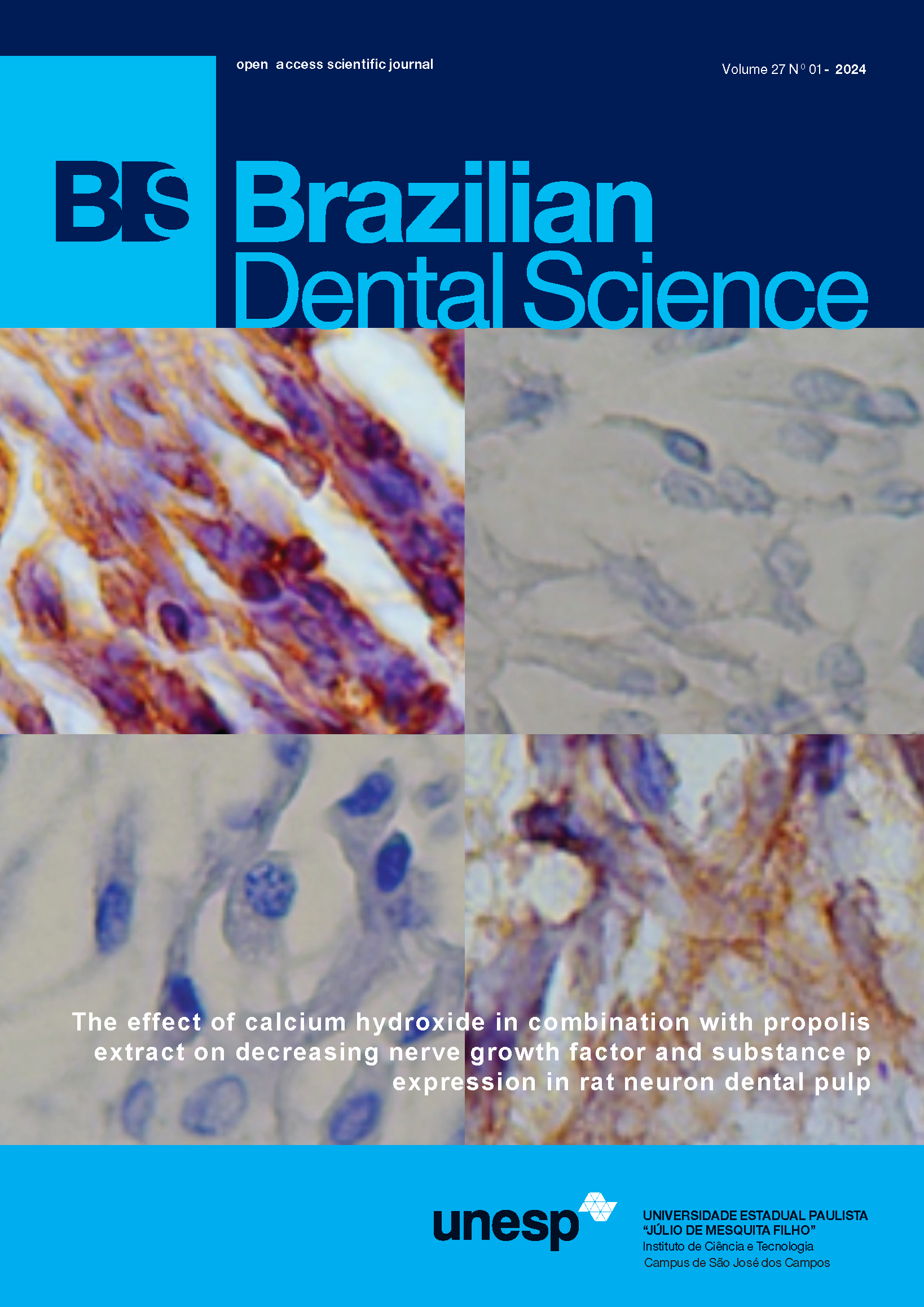Evaluation of morphological and chemical alterations in enamel, dentin and cementum after internal bleaching technique using different bleaching agents
DOI:
https://doi.org/10.14295/bds.2016.v19i4.1286Abstract
Objective: The aim of this study was to evaluate the morphological and chemical alterations in enamel, dentin and cementum after internal bleaching using scanning electron microscopy (SEM) and energy dispersive spectrometry (EDS). Material and Methods: Seventy-two bovine incisor teeth were prepared, cut and bleached for 7 days as follows: HP: 35% hydrogen peroxide gel; HP+SP: 35% hydrogen peroxide gel + sodium perborate; CP: 37% carbamide peroxide gel; CP+SP: 37% carbamide peroxide gel + sodium perborate; SP: sodium perborate + water; and control: deionized water. The specimens were sectioned and prepared for morphological analysis under SEM and analysis of calcium, phosphorus, oxygen and carbon levels using EDS. Results: A significant reduction was found in the calcium levels in enamel after treatment with CP + SP and CP (p < 0.05). Carbon (organic part) was hardly altered in enamel. A significant reduction in the calcium levels was found in dentin in Groups HP+SP, CP and CP+SP. Phosphorus levels increased after SP+H20 (p < 0.05) and CP (p < 0.05). Carbon levels showed little variation and the largest amount was found in Groups CP and CP+SP (p < 0.05); in the other groups there was no alteration. A significant reduction in the calcium levels was found in the cementum in Group CP+SP (p < 0.05). Conclusion: Alterations in the enamel, dentin and cementum compositions occurred after bleaching and these alterations showed to be less significant with sodium perborate and water.
Keywords: Carbamide peroxide; Hydrogen peroxide; Scanning electron microscopy; Sodium perborate; Tooth bleaching.




